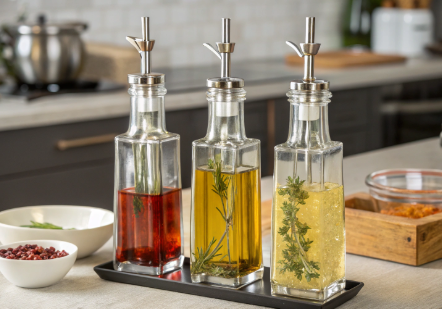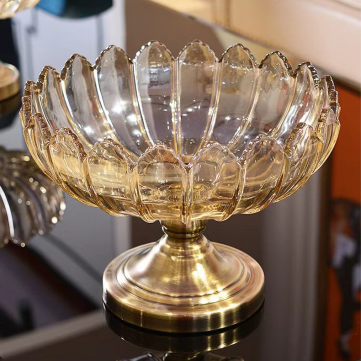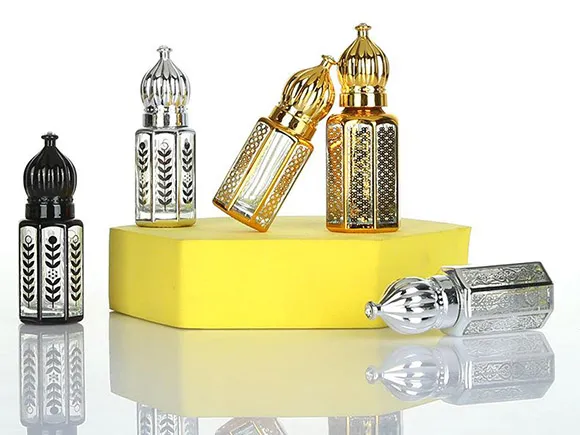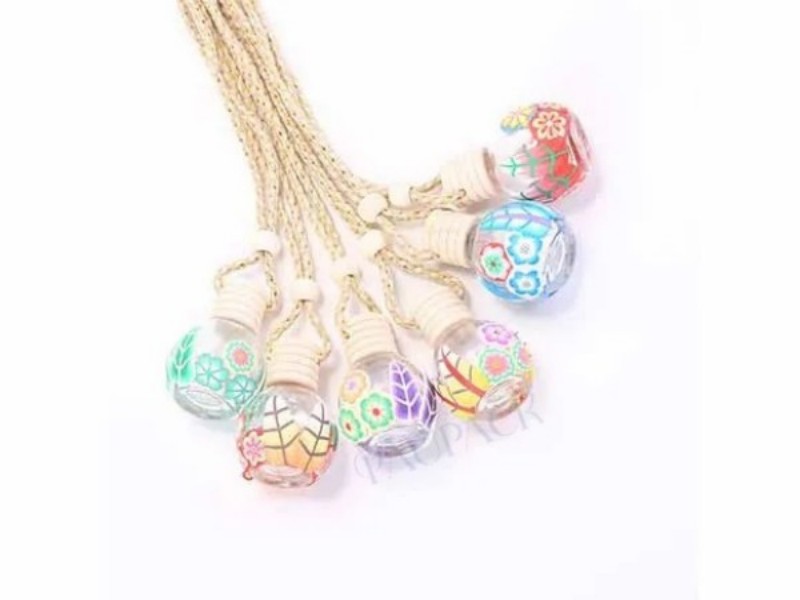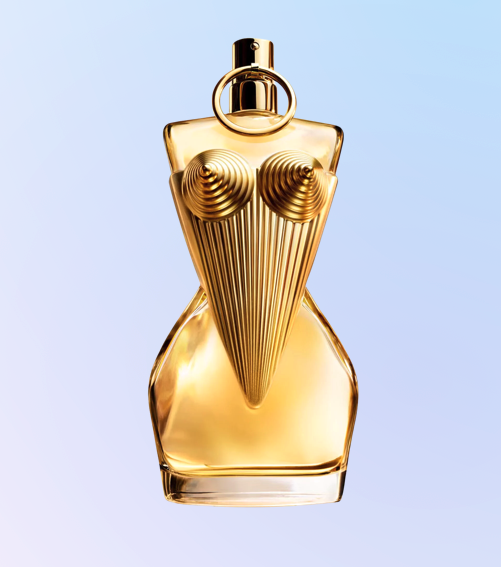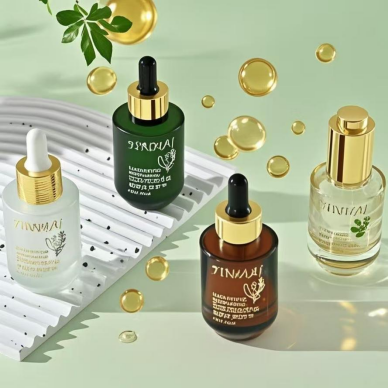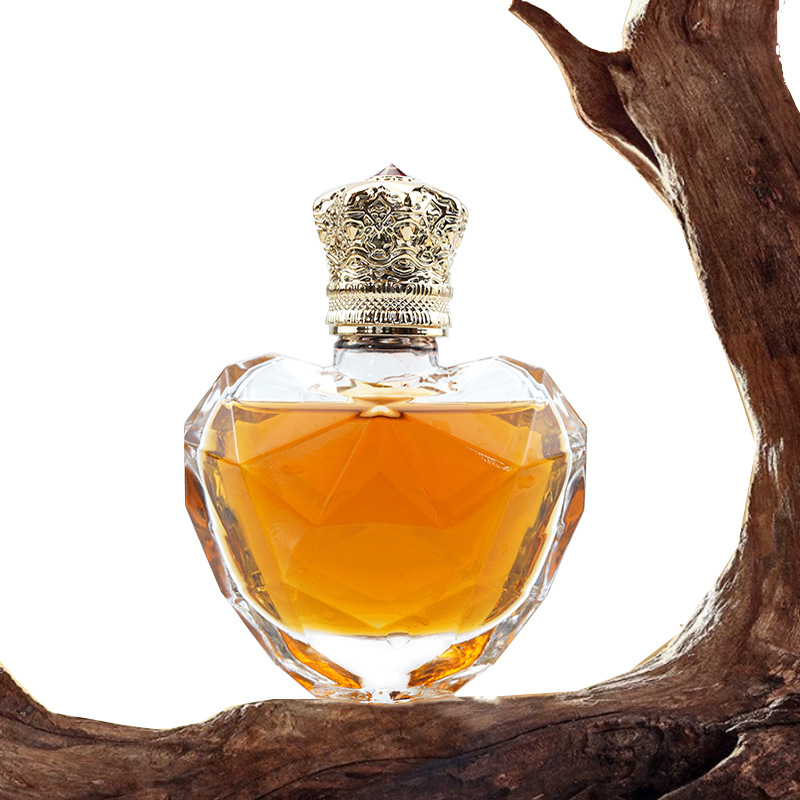Reusingglass oil bottlesis a practice that not only promotes environmental stewardship but also saves money and unveils creative uses for premium packaging. However, proper cleaning and care are paramount to ensure hygiene, visual appeal, longevity, and flavor preservation—especially when reusing for culinary, wellness, or home organization purposes.
AtPaupack, our commitment to quality and eco-friendly design inspires this ultimate guide. Whether you’re a home cook, a small food brand, or a sustainability advocate, you’ll find actionable strategies to clean, maintain, and reinvent yourGlass Bottlesfor endless reuses.
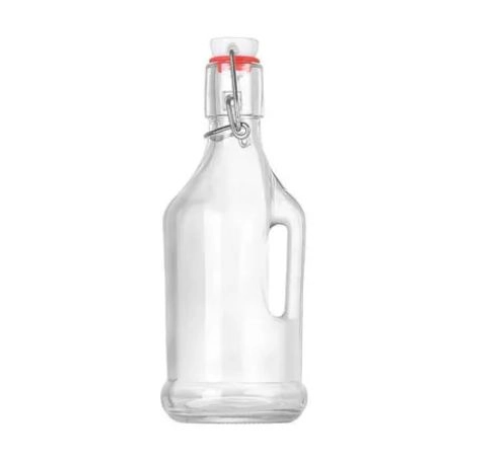

Why Cleaning and Reusing Glass Bottles Matters
Elevating Sustainability
Glass stands as a symbol of eco-responsibility. Unlike single-use plastics, premiumGlass Bottlescan be reused indefinitely if they are properly maintained, cutting down on environmental waste and supporting the circular economy. Every reused bottle means one less in landfills.
Health and Economic Sense
Residual oils can carry flavors, allergens, or even bacteria—cleaning bottles thwarts spoilage, cross-contamination, and off-odors. Repurposing high-qualityGlass Bottlesalso translates to real savings, reducing the need for new purchases.
Endless Creative Potential
A sparkling, clear bottle is a blank canvas for kitchen infusions, eco-crafts, aromatherapy blends, and decorative accents. With the right techniques, Paupack’s premium containers become both sustainable heroes and design statements.
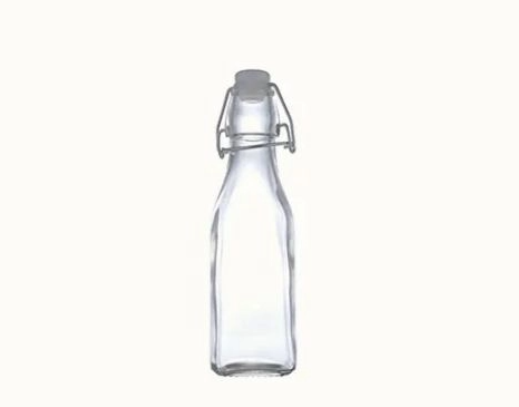

Challenges in Cleaning Glass Oil Bottles
Even top-qualityGlass Bottlescan present tricky cleaning challenges, especially after storing dense or flavored oils. The narrow neck, natural stickiness, and sometimes residual herb or spice particles require more than a quick rinse.
-
Oil Film: Adheres persistently to interior surfaces, especially after oxidation.
-
Odors: Strongly flavored oils (like garlic or chili blends) leave aromatic traces.
-
Labels and Adhesives: Retail bottles often have tough adhesives and paper left behind.
-
Bacterial or Mold Growth: Leftover oil and trapped moisture can harbor microorganisms.
-
Cloudiness/Surface Residue: Water spots, soap scum, or old oil can dull glass clarity.
Understanding these challenges is vital to restoring bottles to pristine, reusable condition.
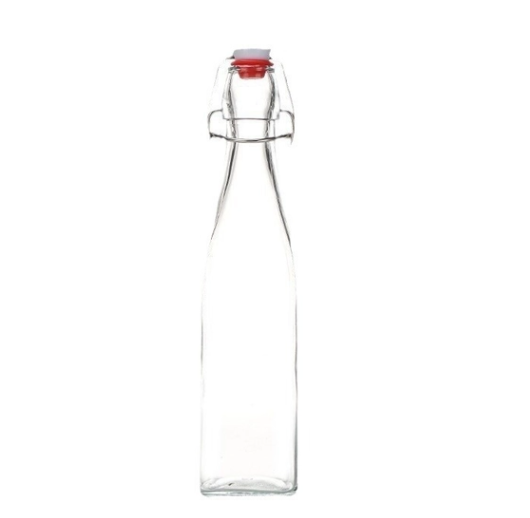

Step-By-Step: How to Clean Glass Oil Bottles for Safe Reuse
1. Initial Preparation: Empty and Pre-Rinse
Action:
-
Pour out any remaining oil from yourGlass Bottles.
-
Fill the bottle halfway with very hot water, swirl, and shake, then pour out. Repeat this until most loose oil is removed.
Detail:
Oil solids can collect at the bottom or neck. If the bottle has a pour spout, remove it and clean separately—these parts often hide oil residues or clogs.
2. Soaking With Detergent Solution
Action:
-
In a basin, add several drops of mild dish soap to hot water (not boiling).
-
Submerge yourGlass Bottles, filling each about two-thirds with the soapy solution.
-
Let soak forseveral hours or overnight.
Detail:
Longer soaks break down hard deposits, especially inside textured or embossed bottles. For heavy, old residue, consider adding a tablespoon of vinegar to the water for additional degreasing power.
3. Brushing and Agitation
Bottle Brushes:
For bottles with wide mouths, use a soft-bristle bottle brush to scrub all interior walls.
For Narrow Necks:
-
Add a tablespoon of uncooked rice or coarse salt.
-
Pour in a tablespoon of vinegar and a few drops of soap.
-
Close with your hand or a cap, then vigorously shake.
-
The rice or salt acts as an abrasive, loosening grime from corners brushes can’t reach.
Repeat as needed—especially for stubborn or old residue in reusedGlass Bottles.
4. Deodorize and Remove Odor
Methods:
-
Vinegar Soak:Mix equal parts white vinegar and water. Fill bottle; soak 30 minutes to 2 hours.
-
Baking Soda:Add two teaspoons of baking soda to wet bottles. Let stand to neutralize odors.
-
Combination Soak:Vinegar plus baking soda creates fizzing action that attacks oil film and eliminates odors.
Expert tip:For particularly pungent garlic or spice scents, repeat this process or let soak overnight.
5. Removing Labels and Sticker Residue
-
Submerge bottles in warm, soapy water for 2 to 4 hours to loosen paper labels.
-
Peel away paper. For remaining adhesive:
-
Use a paste of baking soda and a few drops of oil.
-
Rub gently with a cloth or your fingers.
-
Wipe clean with a sponge or non-abrasive scrubber.
-
-
For extremely stubborn glue, try a cotton ball with rubbing alcohol.
Paupack’sGlass Bottlesare designed for easy re-labeling, offering a clear surface for custom branding, gifting, or organization after cleaning.
6. Rinse Multiple Times
-
Rinse bottles with very hot water (at least three rinses).
-
Smell and inspect for any lingering soap, vinegar, or oil scent.
-
Ensure no visible residue, specs, or film on glass walls.
Note:Any left-over cleaning agent can affect new oil flavor and safety.
7. Complete Drying
Air Dry:
Invert the bottles on a clean dish rack or a towel. Allow air to circulate for a minimum of 24 hours.
Extra Tip:
To accelerate internal drying, use a hairdryer with a cool, gentle setting, or place bottles in sunlight for a natural, bacteria-reducing effect. Just avoid sudden temp changes.
8. Sanitizing for Food and Oil Reuse
Especially critical if you’re refilling with oil, sauce, or edible products.
-
Boiling:Submerge bottles in a large pot of boiling water for 5-10 minutes. Carefully remove with tongs.
-
Dishwasher:Run bottles on the highest, sanitize setting for maximum germ-killing power.
-
Steam Cleaner:A steamer designed for bottles works for both home and commercial use.
Pause to Inspect:
If a bottle shows any chips, cracks, or cloudiness, retire it from reuse, as this can harbor bacteria or result in injury.
9. Special Methods for Persistent Residue
Alcohol or Vodka Rinse:
Pour a few tablespoons of high-proof alcohol into the bottle, swirl, let sit, then pour out and rinse with hot water.
Commercial De-greasers:
In rare cases (and for non-culinary reuse), commercial bottle de-greasers can remove the most stubborn residues. Always rinse thoroughly before edible use.
Pro Tip:
Never use bleach or strongly scented chemicals, as glass can trap odors and residues, affecting future use.
Maintaining Glass Oil Bottles for Multiple Uses
-
Always Clean Promptly:Don’t allow oil to sit; the older the residue, the tougher to remove.
-
Inspect Caps and Closures:Replace any worn or stained closures with new ones. Paupack provides a variety of closure types for different needs.
-
Store Dry:Moisture is the enemy of both the glass and the contents. Store bottles upside down between uses.
-
Avoid Extreme Temperature Shock:Don’t pour boiling liquid into a cold bottle, or vice versa, as this can cause glass to crack.
Creative Ways to Reuse Glass Oil Bottles
Paupack’sGlass Bottlesare designed to withstand many reuses, both at home and for business. Explore these extended, high-value ideas for reuse:
For Food & Kitchen
Infused Oils:
After cleaning, fill bottles with olive oil and fresh herbs, garlic, or chilies; let infuse for custom salad dressings or finishing oils.
Homemade Vinegars:
Fruit- or herb-infused vinegars make elegant gifts in sleek glass bottles—just ensure perfect cleaning and complete drying.
Sauces and Syrups:
Reusable bottles are perfect for housing homemade soy sauce blends, vinaigrettes, or simple syrups for coffee and cocktails.
Spice Storage:
Store whole spices, dried chilies, peppercorns, or even grains.
Wellness & Personal Care
Aromatherapy:
Craft custom essential oil blends for massage, aromatherapy, or bath oils. PaupackGlass Bottlesprotect delicate scents from degradation.
DIY Cosmetics:
Serums, toners, and lotions look premium and stay uncontaminated in clear glass.
Home & Craft
Vases and Decor:
Single-stem vases, sand art, or decorative lights;Glass Bottlesbring understated elegance to tabletops.
Craft Supply Storage:
Beads, buttons, paint; an organized workshop is more inspiring.
Business/Branding
Sampler Kits:
SmallGlass Bottlesare perfect for brand sample kits or gifting.
Bulk/Refill Stations:
For sustainable businesses, offer returnable/reusable bottle programs. Premium glass resists scratching, preserves freshness, and highlights eco-commitment.
Gifting
Personalized Bottles:
Customized with waterslide decals or embossed stickers, filled with bath salts, infused spirits, or gourmet oils.
Sustainability: Paupack’s Commitment Through Glass Bottles
Every time you reuse aGlass Bottlefrom Paupack, you reduce landfill, conserve resources, and help drive a culture of environmental responsibility. Our design ethos embraces recycled glass, durable construction, and universal closure compatibility.
-
100% Recyclable:At end of life, glass can return endlessly to the recycling stream.
-
Eco-Innovation:Heavy metals free, BPA-free, with options for post-consumer recycled content.
Expanded Troubleshooting & Pro Tips
Why does my bottle still smell after cleaning?
Oils, especially flavored ones, are persistent. Try alternating vinegar and baking soda soaks, repeat scrub-agitate methods, and always ensure complete drying to avoid mold growth.
Can I switch bottle uses (e.g., from chili oil to syrup)?
After a thorough, multi-stage cleaning and sanitization, and ifallodors are gone, yes. Never use bottles that can’t be 100% odor free for delicate contents.
How many times can a bottle be reused?
Indefinitely, provided it’s undamaged and well-cleaned—this is especially true with Paupack’sGlass Bottles, made for repeated use across kitchens and small-batch bottling operations.
How to remove stubborn water spots or cloudiness?
Soak with a solution of vinegar and water (1:1), scrub with a brush, then rinse and dry completely. Extremely hard water may require a mild citric acid soak.
Batch Cleaning Guide for Businesses
If you operate a restaurant, a craft sauce brand, or a refill station using PaupackGlass Bottles, establish a routine cleaning line:
-
Pre-rinse bottles
-
Fill large soaking basin with hot soapy water; submerge all bottles
-
Use high-potency commercial bottle washers or automated rotating brushes
-
Industrial sanitizer (steam, UV, or dishwasher)
-
Air dry upside down on racks with food-contact certification
-
Visual inspection at every step
Maintaining a log for each cleaning batch assures traceability and regulatory compliance.
Full Cleaning and Reuse Checklist Table
| Step | Description/Action | Tools/Supplies Needed | Tips & Warnings |
|---|---|---|---|
| Empty & Pre-Rinse | Remove all oil, quick hot rinse | Hot water, sink | Remove pourers/caps first |
| Detergent Soak | Fill with soapy water, soak overnight | Dish soap, warm water | Add vinegar for degreasing |
| Brush/Agitate | Scrub with bottle brush or rice for narrow necks | Bottle brush / rice or salt | Agitate vigorously |
| Vinegar/Baking Soda | Remove odor and stubborn oil | Vinegar, baking soda, water | Repeat for tough jobs |
| Final Rinse | Thorough, hot, multiple rinses | Hot clean water | No odors/film should remain |
| Drying | Air dry upside down, blow dry if needed | Dish rack, clean towel, hair dryer | Invert for max airflow; avoid closed spaces |
| Sanitizing (food reuse) | Boil, dishwasher sanitize or steam clean | Pot, tongs, dishwasher/steam cleaner | Inspect for glass damage before using |
| Label Removal | Soak, scrub away adhesive; use oil/soda as needed | Warm soapy water, baking soda, oil, alcohol | Test gentle abrasion first |
| Visual Inspection | Check clarity, chip/crack-free before every refill | Light source | Always discard compromised bottles |
| Reuse/Repurpose | Fill with oils, sauces, crafts, personal care items, etc. | New caps, corks, labels, creativity | Label all bottles for safety if new contents differ |
FAQ: Glass Oil Bottle Cleaning and Reuse
Q1: Is glass safer than plastic for reuse?
Absolutely. Glass from Paupack is non-porous, non-reactive, and resists both flavor and bacterial absorption—unlike plastic, which can crack, stain, or hold odors even after washing.
Q2: What’s the most eco-friendly cleaning method?
Use natural agents—vinegar, baking soda, mild plant-based soap. Clean as soon as bottles are emptied to save effort and water.
Q3: Can cloudy bottles be made clear again?
Often, yes—multiple soaks in hot vinegar and water, a baking soda paste scrub, and a polish with a soft cloth frequently restores clarity.
Advanced Tips: Maximizing Bottle Life for Businesses and Home Chefs
For Producers/Gifting
-
Periodically rotate old bottles out and into non-food uses (decor/craft).
-
For gifting, personalize cleaned bottles with Paupack’s custom labels or laser-etched branding.
-
Combine bottle reuse messaging with your environmental story—it resonates with modern buyers.
For Home Organizers
-
Keep a selection of bottle sizes for various uses.
-
Use chalkboard labels or waterproof marker to update bottle contents.
-
Practice FIFO (first-in-first-out) with bottled products for freshness and safety.
Conclusion: Make Every Glass Bottle Count
Cleaning and reusingGlass Bottlesisn’t just about hygiene—it’s about setting a standard for conscious consumerism and business. Professional, elegant, and endlessly versatile, Paupack’s glass bottles are crafted for those who value quality and sustainability alike. Whether for another round of premier oil, a hand-crafted gift, or an inventive home project, diligent cleaning lets each bottle live many lifetimes.
Discover Paupack’s collection of premiumGlass Bottles:unmatched transparency, eco-responsibility, robust design, and world-class support for families, food artisans, and sustainability leaders everywhere.
For more expert advice, bottle sizes, closure options, or custom branding,visitPaupack’s Glass Bottlesand unleash the full potential of every drop and every container—clean, safe, and always ready for reuse.




